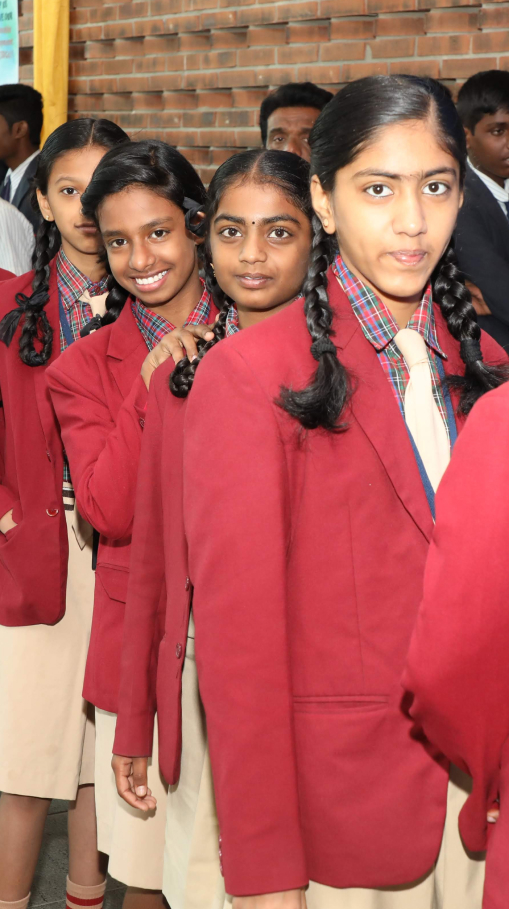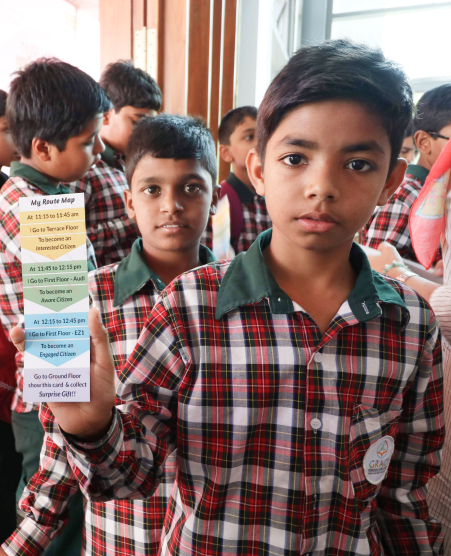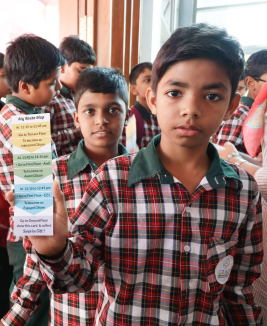Reimagining civic education in India
Janaagraha’s Civic Learning initiative seeks to transform the youth of urban India into informed, responsible, and active citizens. The program fosters a sense of civic duty and responsibility while also imparting critical skills like systems thinking, leadership, and teamwork. It encourages children and youth to take ownership of their neighbourhoods and cities, and to work collaboratively with the government to improve them.
Research shows that those who have received civic education are: four times more likely to volunteer and work on community issues; are more likely to vote and discuss politics at home; and are more confident in their ability to speak publicly and communicate with their elected representatives.
Civic education improves the quality of life in neighbourhoods and also leads to well-rounded policies and governance.
Yet, despite its immense potential for transformation, civic learning continues to be an often overlooked and ignored subject. Only 6% of time is allocated to civic education in schools. There is a dearth of high-quality content and tools on civic learning.

As citizens, there are some important questions we must ask ourselves.
Do we follow traffic rules and segregate waste? Do we pay our taxes? Do we vote in all elections? Do we raise our voices for the conservation of public goods? Do we refrain from paying bribes?
These questions reflect the nature and quality of citizenship in India, something we seek to transform through Bala Janaagraha.
Launched in 2002, Bala Janaagraha is a learning initiative that seeks to transform the youth of urban India into informed, responsible, and active citizens. The program fosters a sense of civic duty and responsibility while also imparting critical skills like systems thinking, leadership, and teamwork.

By 2030, India’s youth will account for 24% of its entire population. That is nearly one in every four persons. Our demographic dividend provides us with the unique opportunity of tapping into the power of the youth to address the country’s biggest development challenges.

By 2030, India’s youth will account for 24% of its entire population. That is nearly one in every four persons. Our demographic dividend provides us with the unique opportunity of tapping into the power of the youth to address the country’s biggest development challenges.
Over the last twenty years, Bala Janaagraha has:
Challenges like climate change, sanitation, gender, and governance are discussed and students are encouraged to analyse the local impact of these global issues. They are taught to look beyond the symptoms to understand the root causes and are also guided on how to approach them.
Bala Janaagraha in Numbers

JANA IN NUMBERS

480,596 children transformed

1,200 educators trained in civic teaching

26,980 hyper-local challenges identified and solved by children across 800 schools and 26 cities

11,690+ children and youth participants in Annual Civic Fests

In the coming years, Bala Janaagraha aims to engage over 1.5 million children and youth across the country to build a generation of change makers.
The focus will be on government and aided schools (which account for 1.1 million of the country’s 1.5 million schools) through partnerships with district and state-level administrations giving us the opportunity to work with students from underprivileged and vulnerable communities and tap into their potential.
Work has begun with the Mangalore District Education Department (DDPI) and the District Administration, District Education Department and District Institute of Education and Training in Kurukshetra, Haryana.